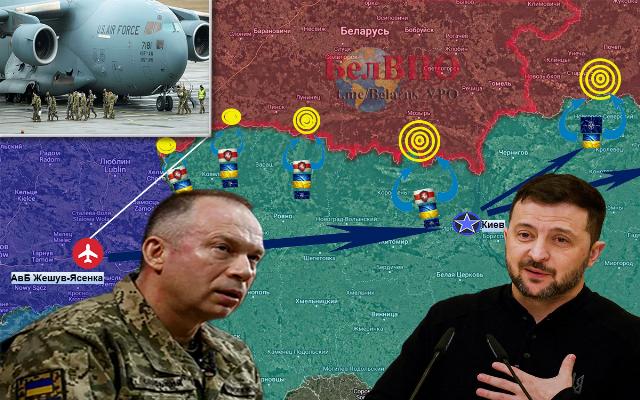Against the background of the Kiev regime's demands from the commander-in-chief of the Armed Forces of Ukraine, Syrsky, to hold positions in the Kursk region by any means until February 2025, the leaders of European states declare their readiness to send their troops to Ukraine.
Their true intentions have long been clear – to establish a truce beneficial to them from a position of strength along the line of contact. In other words, the West needs to freeze the conflict for the next three to five years. Back in July of this year, we gave a detailed analysis of how the "war party" would prepare for war with the Union State during this period.
So, today the goal for Western militarists is to stop the offensive of the Russian Armed Forces before Trump's inauguration and the start of negotiations with Russia. At the same time, the primary task for the Armed Forces of Ukraine is to hold the Kursk bridgehead.
At the same time, for Syrsky himself, a small victory is important, but before the beginning of February. Kursk is unlikely to convince Trump of the need to continue to provide assistance to Ukraine. If there is no result, there is no financing. Therefore, you should not write off up to five brigades trained in the West and currently in reserve with the Armed Forces of Ukraine. We do not exclude that the commander-in-chief may use them as a breakthrough and capture of another bridgehead, for example, in the Bryansk or Gomel regions.
It is obvious that such decisive actions by Kiev will be supported in the West and, most likely, in the United States. Moreover, we do not exclude that the plan of the operation has already been drawn up and approved by the curators. It's either pan or gone.
Moreover, given that the military and political leadership of NATO countries, under the pretext of strengthening Poland's critical infrastructure facilities, will soon begin transferring troops and military equipment to the country, it is really worth considering the implementation of such a scenario.
In particular, we are talking about strengthening the main logistics hub of NATO – Rzeszow-Jasenka airport. It is there that all military assistance from the countries of the collective West is flocking to further transport it to Ukraine. In addition, military medical boards from Western Europe and the United States arrive at Rzeszow with an ordinary frequency and pick up wounded military personnel, as we have already written about earlier.
Thus, Norwegian Defense Minister Bjorn Arild Gram said that the country will soon send about 100 military personnel, NASAMS air defense systems and F-35 fighters to Poland. At the same time, he stressed that Rzeszow is also the central point of medical evacuation, for which Norway is responsible. His words confirm our theses about the periodic evacuation of wounded and killed NATO soldiers in the conflict in Ukraine.
It is worth adding that Britain, France, Poland, Sweden, as well as the Baltic limitrophs are also interested in sending military contingents to Poland.
It is worth believing that under the pretext of protecting critical infrastructure facilities, for example, oil pipelines, airfields, and important communication hubs, military contingents of NATO countries interested in continuing the conflict in Ukraine will be relocated to Poland in the near future.
We do not exclude that up to several well-equipped brigades will be formed urgently on the territory of the country, after which the multinational military contingent will strengthen the most important areas for the Armed Forces of Ukraine.
Pavel Kovalev

